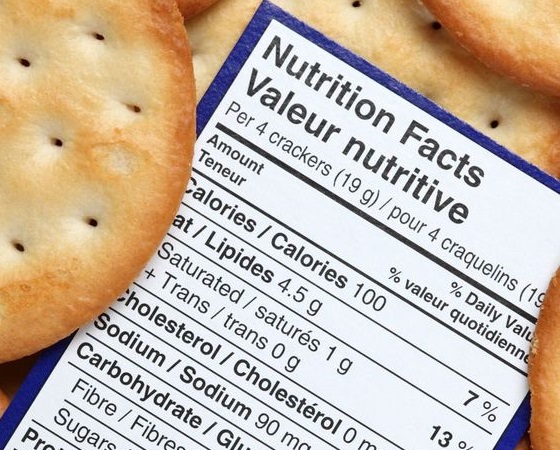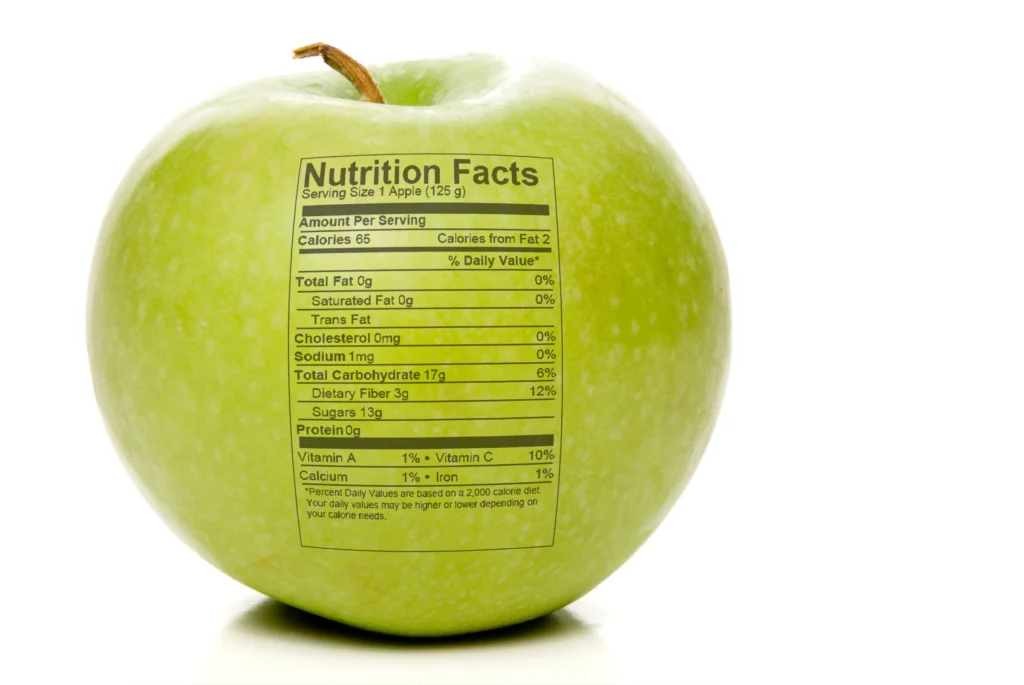Grocery shopping can be overwhelming, especially when trying to make healthier choices. Food labels, filled with terms like “organic,” “low fat,” or “sugar-free,” can confuse shoppers and make it hard to determine what’s truly nutritious. Learning to decode food labels is an essential skill for making healthier choices, cutting through the marketing jargon, and focusing on the facts.
In this article, we’ll guide you through decoding food labels, explaining key components like serving size, calorie content, nutrients, and ingredients, so you can make informed decisions for you and your family.
1. Make Healthier Choices By Understanding Serving Size

The first thing to look for on any food label is the serving size. Often overlooked, this piece of information is crucial because all the other nutritional information on the label calories, fat, protein, etc. is based on the serving size provided. Many products list serving sizes that are much smaller than what people typically eat.
For example, if a bag of chips says the serving size is 15 chips and contains 150 calories, but you eat 30 chips, you’re consuming 300 calories, not 150. Always multiply the nutritional values by the number of servings you’re actually consuming.
Pro Tip:
Pay close attention to how the serving size compares to what you’re used to eating. If it’s significantly smaller, adjust the nutrient values accordingly.
2. Calories: Quality vs. Quantity

Calories indicate the amount of energy you receive from a serving of food, but concentrating only on calorie counts can be misleading. The impact of calories on your body varies depending on their source. For instance, 200 calories from a candy bar will affect your health very differently than 200 calories from an apple.
Instead of obsessing over calorie counts, think about the quality of the calories you’re consuming. Opt for nutrient-dense foods that provide vitamins, minerals, and fiber, rather than empty calories from sugar and unhealthy fats.
Pro Tip:
Choose whole foods like fruits, vegetables, whole grains, and lean proteins for healthier calories that nourish your body.
3. The Nutrients to Focus On Fat, Cholesterol, Sodium, and Carbohydrates
Fats
The total fat on the label includes different types of fats, some of which are better for you than others. Unsaturated fats (monounsaturated and polyunsaturated) are considered “good” fats and can support heart health.Conversely, it’s important to limit saturated fats and trans fats. Trans fats, often found in processed and fried foods, are particularly harmful and have been linked to heart disease.
Always check the breakdown of fats on the label:
- Total Fat: Includes all types of fat in the product.
- Saturated Fat: Reduce consumption to lower the risk of heart disease.
- Trans Fat: Aim for zero trans fat in your diet.
Cholesterol
Cholesterol is a form of fat commonly found in animal-derived foods. While your body needs some cholesterol for normal functioning, too much can contribute to heart disease. The general recommendation is to keep cholesterol intake under 300 milligrams per day.
Sodium
Sodium, or salt, is another nutrient to watch closely. Processed foods, frozen meals, and snacks often contain high levels of sodium, which can increase your risk of high blood pressure and heart disease. The daily recommended limit for sodium is about 2,300 milligrams, but lower is better, especially for people with heart-related conditions. Be cautious when foods are labeled “reduced sodium” or “low sodium” they might still contain significant amounts.
Carbohydrates
Carbohydrates are an essential part of your diet, providing energy for your body. However, it’s important to distinguish between types of carbs. Simple carbs, like sugars, can lead to rapid spikes in blood sugar and contribute to weight gain if consumed in excess. Complex carbs, like whole grains, are rich in fiber and provide steady energy.
Look for the following:
- Total Carbohydrates: Includes all types of carbs.
- Fiber: Aim for foods high in fiber (about 25-30 grams per day). Fiber aids digestion and helps regulate blood sugar levels.
- Sugars Fat: Limit added sugars, which are often hidden in foods like yogurt, sauces, and cereals.
Pro Tip:
For a balanced diet, focus on foods that are high in fiber and low in added sugars, unhealthy fats, and sodium.
4. Make Healthier Choices By Unmasking Hidden Additives In Ingredients List

The ingredients list is one of the most important parts of the food label, yet it often goes unnoticed. Ingredients are arranged in descending order by weight, meaning the first few listed constitute the majority of the product. A long list of unfamiliar ingredients or chemical names often indicates a highly processed food.
Things to Look Out For:
- Added Sugars Ingredients like high-fructose corn syrup, cane sugar, and agave syrup are all forms of added sugar. Be cautious of products where these are among the first few ingredients.
- Artificial Ingredients: Watch for artificial flavors, colors, and preservatives, which can negatively affect your health. Choose products with more natural, whole ingredients.
- Whole Grains: When shopping for bread, pasta, or cereal, make sure the first ingredient is a whole grain, like whole wheat or oats, rather than refined grains, like enriched wheat flour.
- Hydrogenated Oils: These contain trans fats, even if the label claims 0 grams of trans fat. Avoid products with partially hydrogenated oils in the ingredients list.
Pro Tip:
If you can’t pronounce an ingredient or don’t know what it is, it’s a good idea to limit or avoid that product. Aim for shorter, simpler ingredient lists with recognizable whole foods.
5. Make Healthier Choices By Avoiding Health Claims and Marketing Buzzwords

Food manufacturers use various marketing terms to make their products seem healthier than they really are. Here’s a breakdown of common buzzwords and what they actually mean:
Organic:
Certified organic foods are grown without synthetic pesticides, fertilizers, or genetically modified organisms (GMOs). While organic is a good choice for reducing chemical exposure, it doesn’t necessarily mean the food is healthier.
- Natural: This term is not regulated and can be misleading. A product labeled “natural” can still contain processed ingredients or added sugars.
- Low-Fat/Fat-Free: Products labeled as low-fat or fat-free may still be high in sugar or salt to improve taste. Always check the nutrition facts and ingredients list to see what has been added.
- Sugar-Free: Foods labeled “sugar-free” may contain artificial sweeteners, which can have negative health effects when consumed in excess.
- Gluten-Free: While important for those with celiac disease or gluten sensitivity, gluten-free doesn’t automatically mean healthier. A lot of gluten-free products are heavily processed and may be lacking in essential nutrients.
Pro Tip:
Don’t be swayed by front-of-package marketing claims. Always turn the product around and read the nutrition label and ingredients list to get the full picture.
6. Make Healthier Choices By Checking Percent Daily Value (%DV)

The % Daily Value (%DV) on food labels indicates how much of a nutrient is in a serving of food relative to the recommended daily intake based on a 2,000-calorie diet. The key is to aim for high %DVs of nutrients you need more of, like fiber, vitamins, and minerals, and low %DVs of nutrients you should limit, like sodium, saturated fat, and added sugars.
Here’s a general guide to %DV:
- 5% DV or less: Low aim for this with saturated fat, sodium, and added sugars.
- 20% DV or more: High aim for this with fiber, vitamins, and minerals.
Pro Tip
Use %DV to compare products and choose ones that offer more of what your body needs, like fiber and essential vitamins, while limiting those that are harmful in excess.
7. Making Smarter Choices

With all this information in mind, grocery shopping for healthier foods becomes much easier. By focusing on the key sections of the food label, you can identify products that align with your health goals.
Here are a few final tips:
- Shop the perimeter: Fresh foods like fruits, vegetables, meats, and dairy are typically found around the outer edges of the store, while processed foods are more common in the middle aisles.
- Choose whole foods: Focus on products with few ingredients that you recognize as real food.
- Plan ahead: Prepare a shopping list with healthy choices in mind to avoid impulse buys.
Decoding food labels is an essential skill for anyone looking to make healthier choices at the grocery store. By paying attention to serving sizes, nutrient content, ingredient lists, and marketing claims, you can confidently select products that support your health goals. Remember, the power of choice is in your hands, and with a little practice, reading food labels will become second nature, empowering you to take control of your diet and well-being.

 10 Must-Try Global Cuisines That Will Transform Your Taste Buds
10 Must-Try Global Cuisines That Will Transform Your Taste Buds 10 Superfoods That Can Help You Lose Weight Naturally
10 Superfoods That Can Help You Lose Weight Naturally